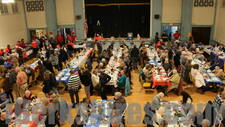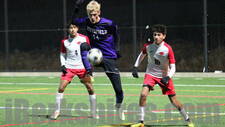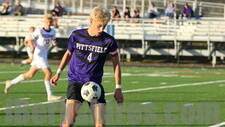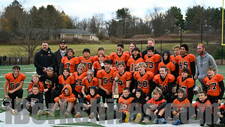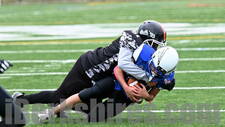Friday Health Focus: Water SafetyBy Susan Bush
12:00AM / Friday, May 12, 2006
 | | Water play can be a time of family fun, and must be a time of close adult supervision. |
Hot summer days send many families to the pool, the beach, or the lake for the cool respite and fun the water can bring. Splashing and swimming can be a real summertime treat, but when safety measures are overlooked for even a few seconds, tragedy can result.
Statistics offered by the federal Centers For Disease Control and Prevention emphasize the risks of ignoring water safety; in 2002, 3,447 people died due to accidental drowning. And, the CDC points out, that number does not include boating incidents.
Drowning And Near-Drowning
Of the 3,447 drowning deaths, 838 were children between the ages of infant to 14 years old. Drowning is the second leading cause of death for children in that age range, according to information provided at a CDC web site.
And instances of near-drowning can leave children with permanent health problems.
"For every child age 14 years and younger who drowns, three receive emergency department care for non-fatal submersion injuries," according to the information. "More than 40 percent of these children require hospitalization. Non-fatal incidents can cause brain damage that result in long-term disabilities ranging from memory problems and learning disabilities to the permanent loss of basic functioning [i.e. permanent vegetative state]."
Children between age 1 and 4 most often drown in residential swimming pools, are under the care of one or both parents at the time of the drowning, and have most often been out of sight of an adult for less than five minutes prior to drowning, according to the CDC information.
Safety and Prevention
There is no way to overstate the number one child drowning prevention safety measure: NEVER leave children unattended in or around any water source, including pools of any size and depth, bath tubs, buckets, and natural or man-made ponds. Children should not be left unsupervised around irrigation ditches, or ANY open, standing water source.
Supervising adults should be within an arm's length of any child being cared for around water. Adults should concentrate their focus on the child and eliminate all distractions, including telephone calls or conversations with others.
Please Fence Them Out
Four-sided fencing that leaves no spaces large enough for children to slip through is the recommended precaution for residential swimming pools. Fences should prevent direct access to a pool from a house.
"Rigid, motorized pool covers, pool alarms, and other protective devices, which may offer some protection if used appropriately and consistently, are not a substitute for four-sided fencing," according to the CDC information.
Adults who own a swimming pool or who supervise children around water should become educated with delivery of cardiopulmonary resuscitation and keep a supply of U.S. Coast Guard-approved devices such as life jackets, life preservers, and a "shepherd's crook" very close at hand.
Air-filled novelties such as "water wings" ARE NOT suitable substitutes for approved water safety equipment and tools, according to CDC information.
Differences Between Pool and Pond
Children should be taught how to swim whenever a parent feels the child is ready. This is an individual decision, however, most children are able to learn swimming skills by age four or five.
Parents and supervising adults should remember that learning to swim well in one body of water, such as a pool, does not mean a child will swim equally well in another body of water, such as a river. Natural bodies of water such as lakes, streams, oceans, and ponds host variable conditions such as water temperature, sudden depth changes, and currents, and may also have hazards located beneath the water surface.
Parents or supervising adults should be familiar with water depth and the location of any underwater hazards before allowing children to jump or dive into the water.
Adolescents must be informed about the significant dangers of mixing alcoholic beverage consumption or drug use -including some prescription medications- with water activities. The American Academy of Pediatrics recommends that adolescents learn cardiopulmonary resuscitation skills, and also encourages high school health classes to include CPR training as part of the curriculum.
The family pool or a nearby lake may be the favored destination for summer fun. With care and attention to safety, these venues may create happy family memories that last a lifetime.
Without attention to safety, the results may be tragic.
Additional information about water safety may be found at a www.aap.org Internet web site or a www.cdc.gov Internet web site.
Susan Bush may be reached via e-mail at suebush@iberkshires.com or at 802-823-9367.
|





